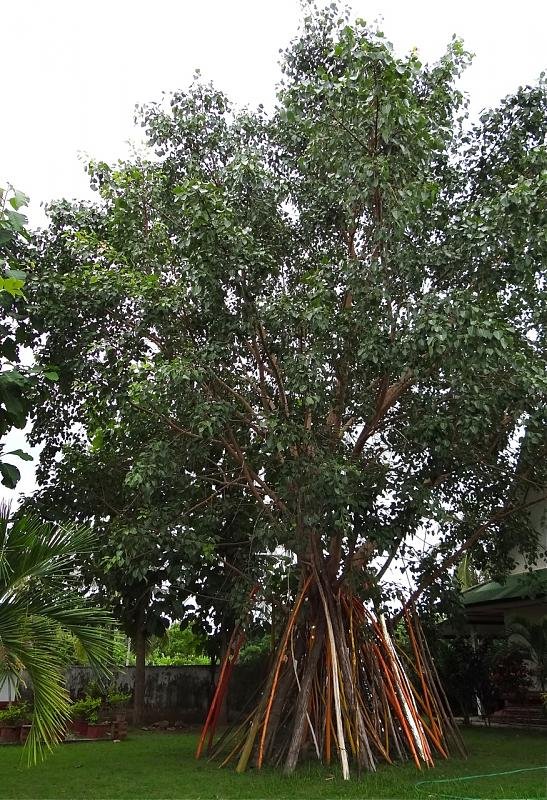2wheels
Community Manager
I'm still familiarising myself with the new Montana 650, so it was time to try to do what many advise I do ... i.e. 'get lost'!
Not far from home I spotted what just might qualify as an 'Almost Asian Bridge Photo'. (?)
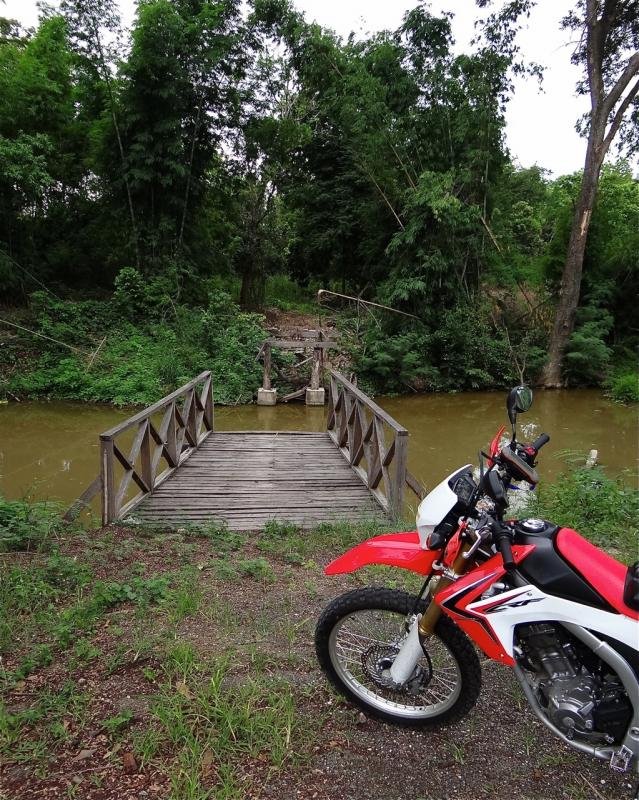
I like village Temples and this one (Wat Nong Sae) was my next stop; and time to climb into the wet weather gear!
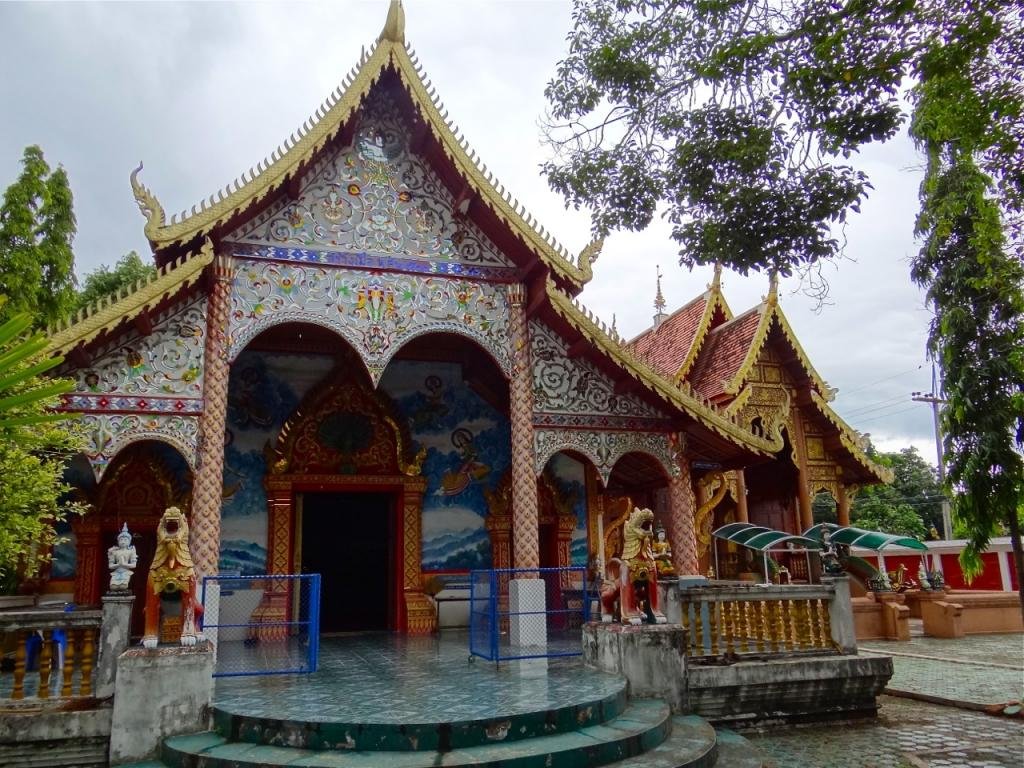
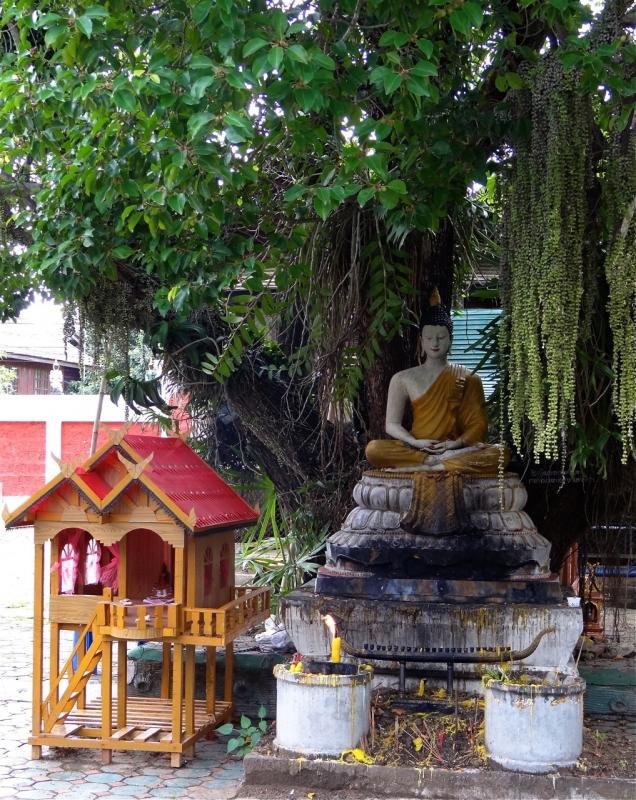
I would be riding in those mountains.
Actually, like some others here, I don't mind wet weather riding.
I've never been one for rapid riding, so it's not an issue to take it easy; as long as the wet weather clothing works. Tragically, I soon discovered mine doesn't !!!!
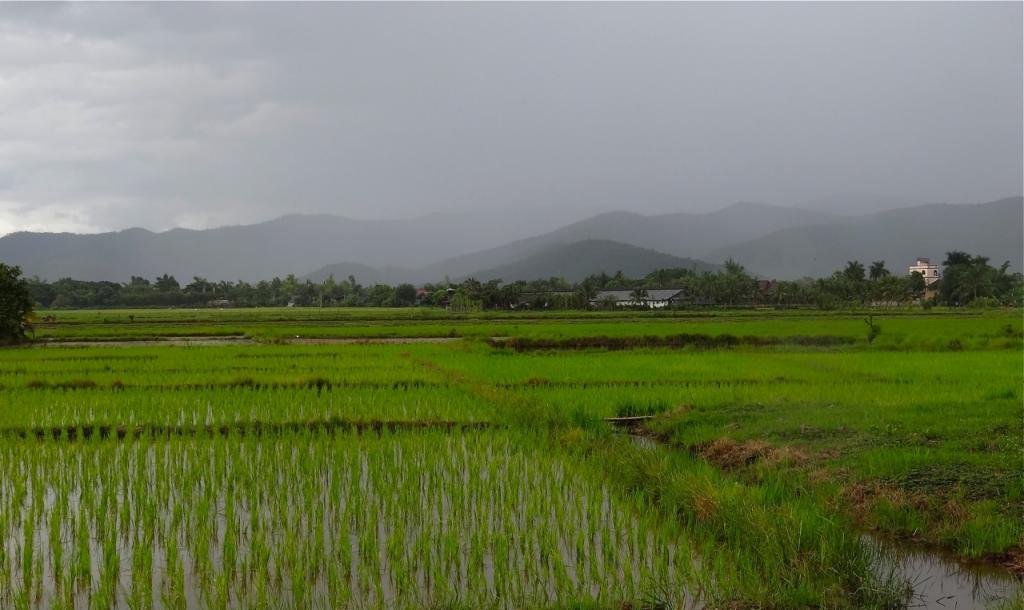
Next stop was at Wat Pah Daeng, which is new and has a very proud care-taker who is pleased to show visitors around.
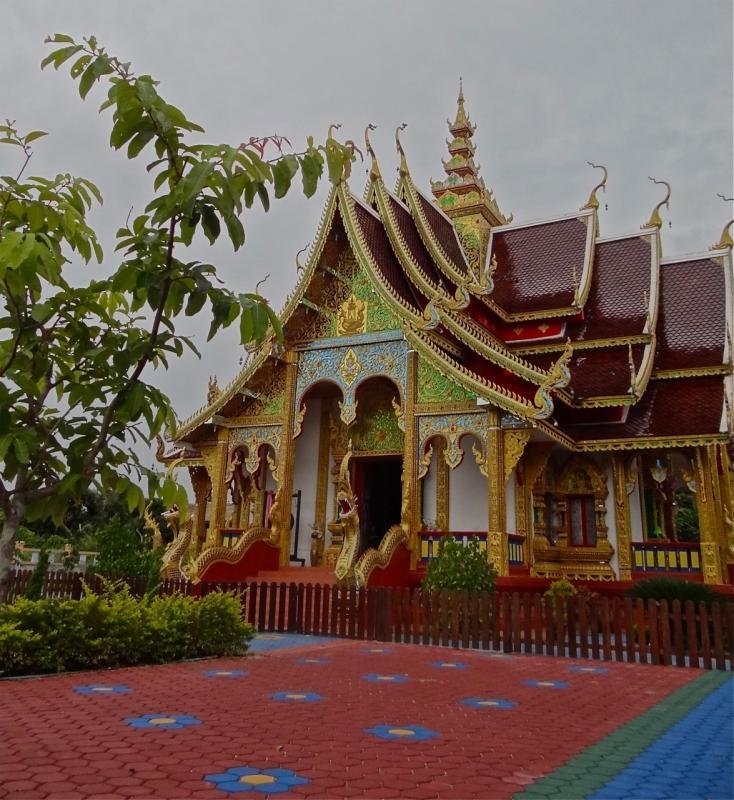
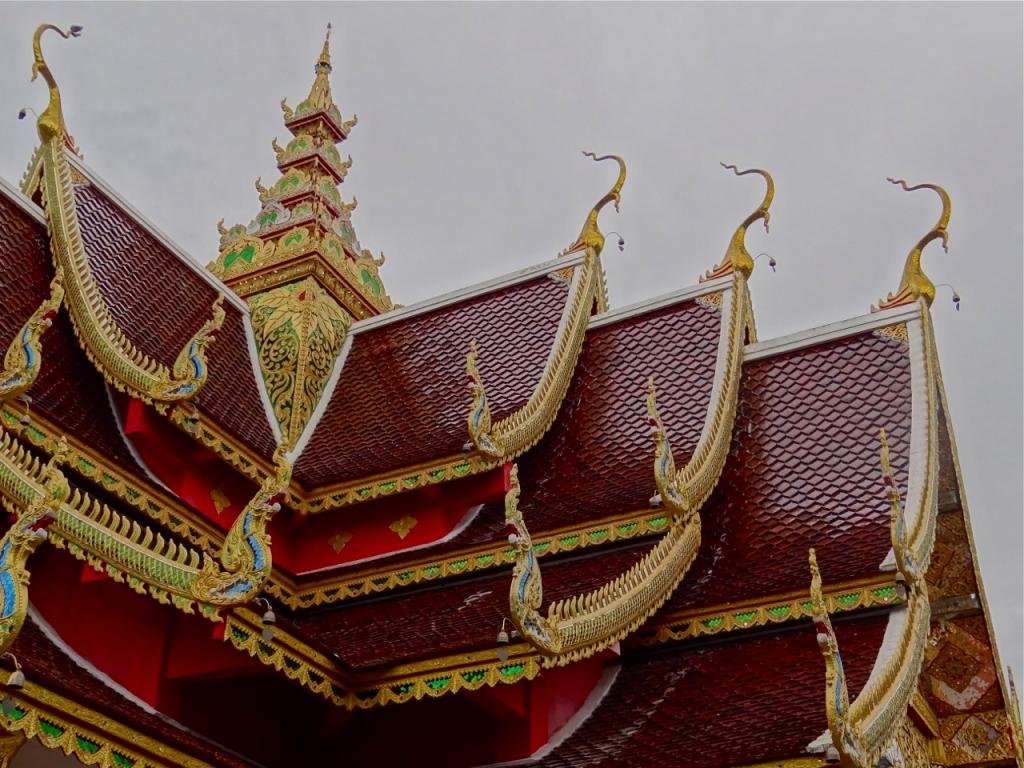
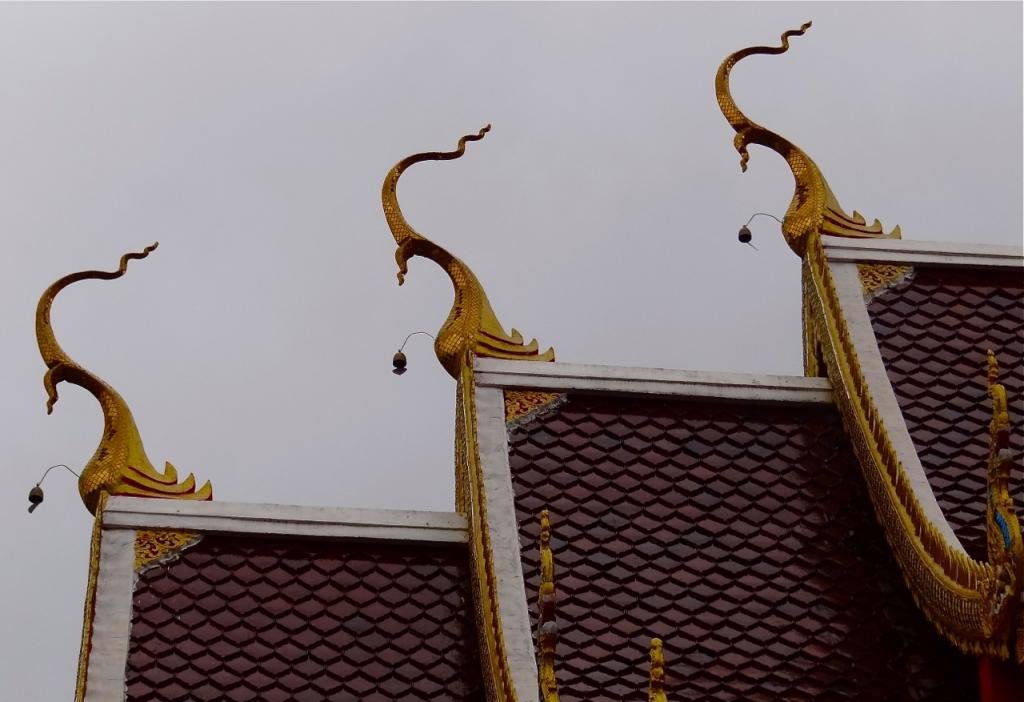
Many of us have seen this practise before.
I confess to not knowing exactly why Buddhists do it.
It's easy to speculate, but I must find out what it's really all about.
(Or maybe some-one who actually knows can share the information here).
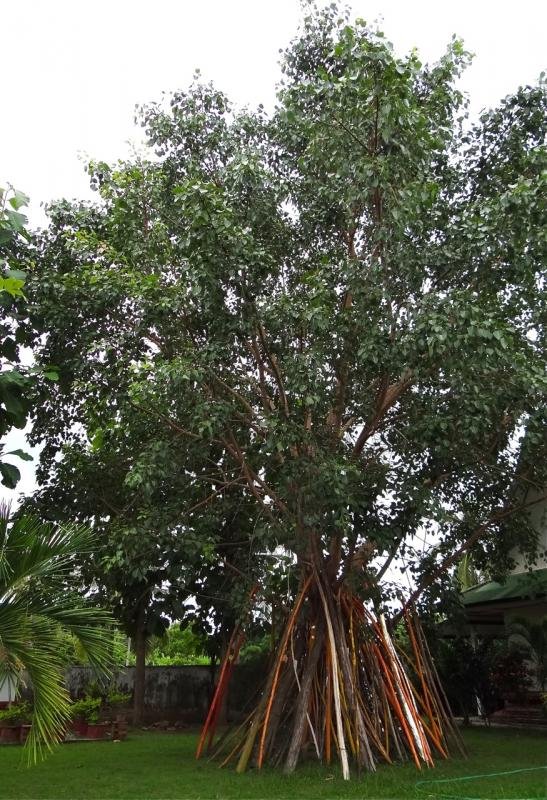
Again, out to #1147 where I spotted what might really qualify as an 'Asian Bridge Crossing Photo' !?
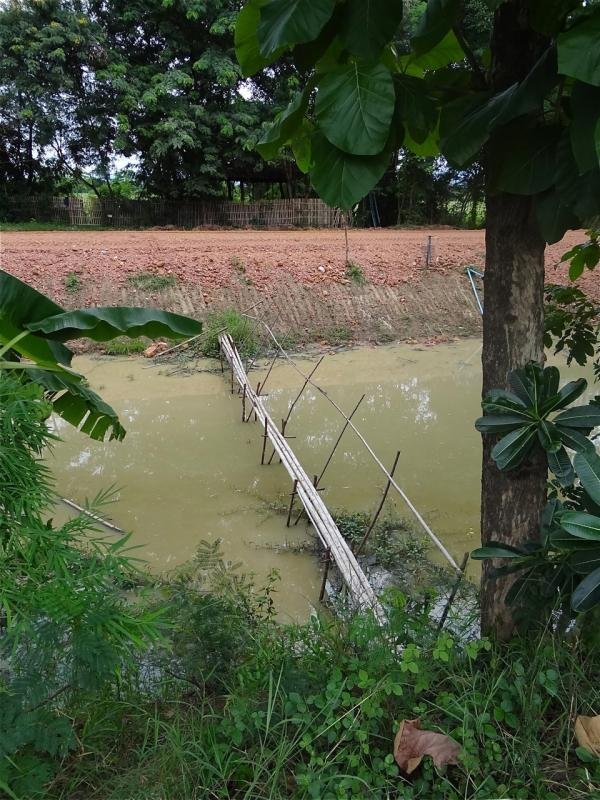
Off the 1147 and onto the 5127 for a while.
The impressive Alpine Resort (minus the snow).
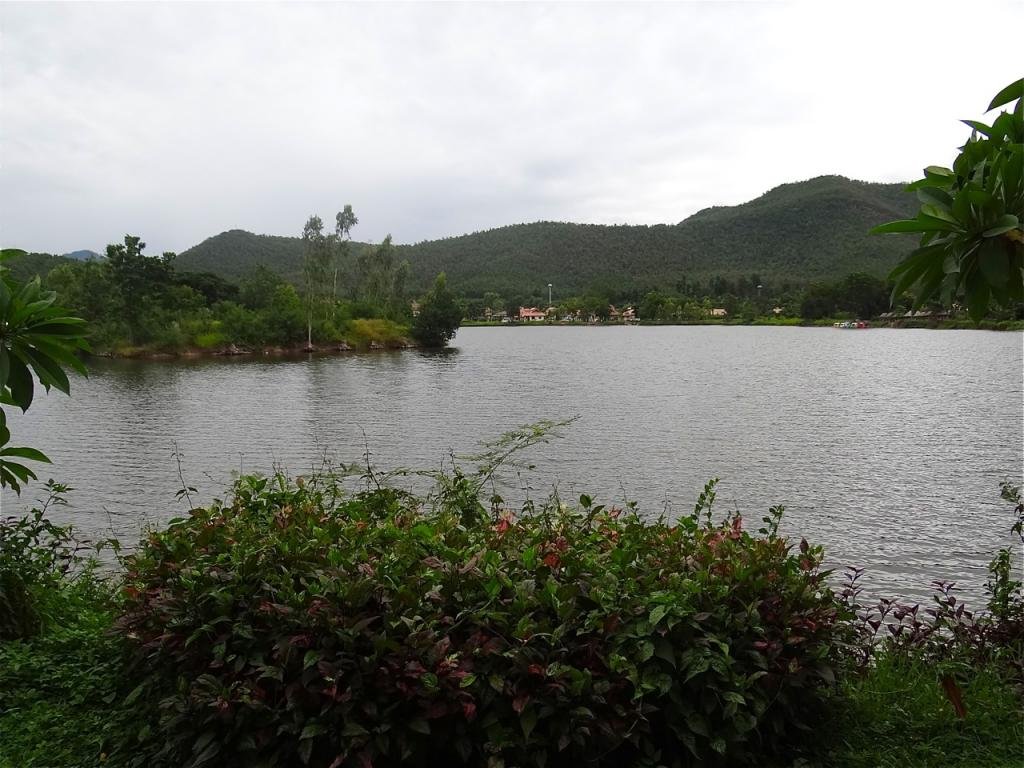
Back to 5127 and on to 5120 where I enjoyed riding all sorts of tracks around the Huai Lan Reservoir.
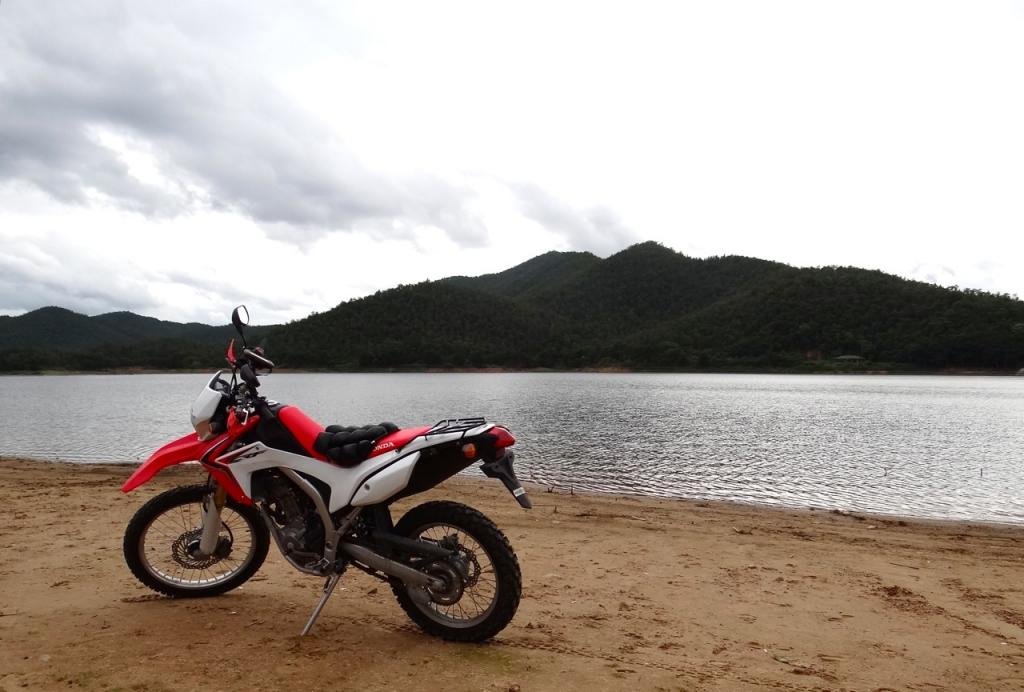
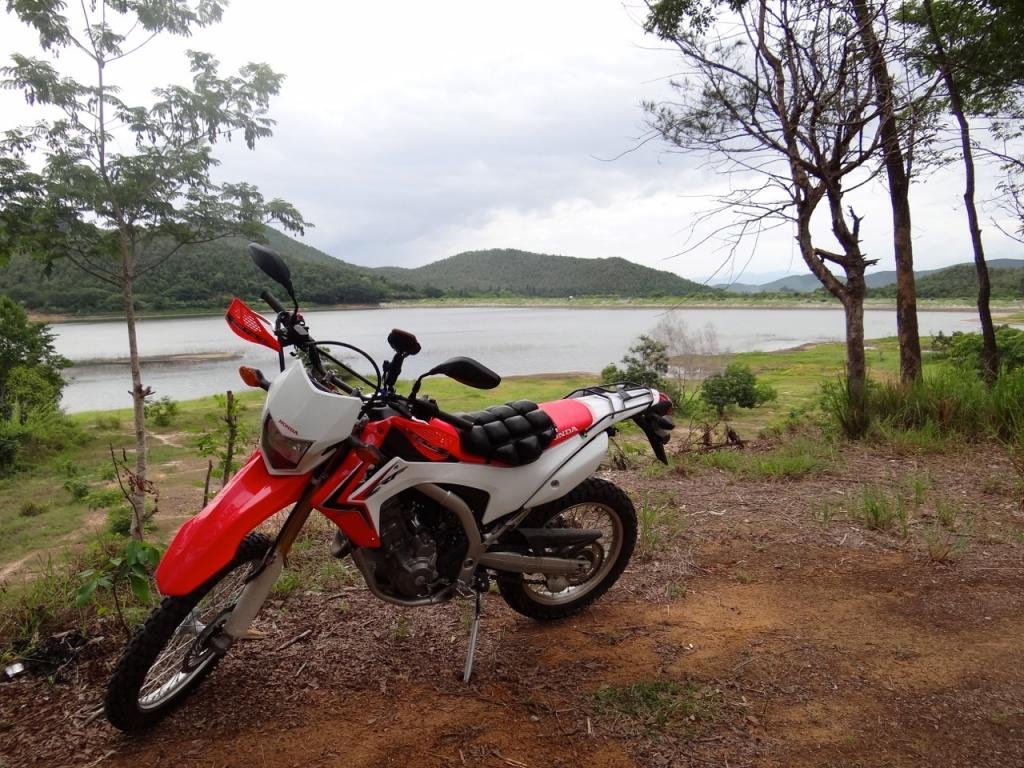
Here there are brick roads, dirt tracks and deep muddy jungle tracks to explore.
Another place to return to on a dry day.
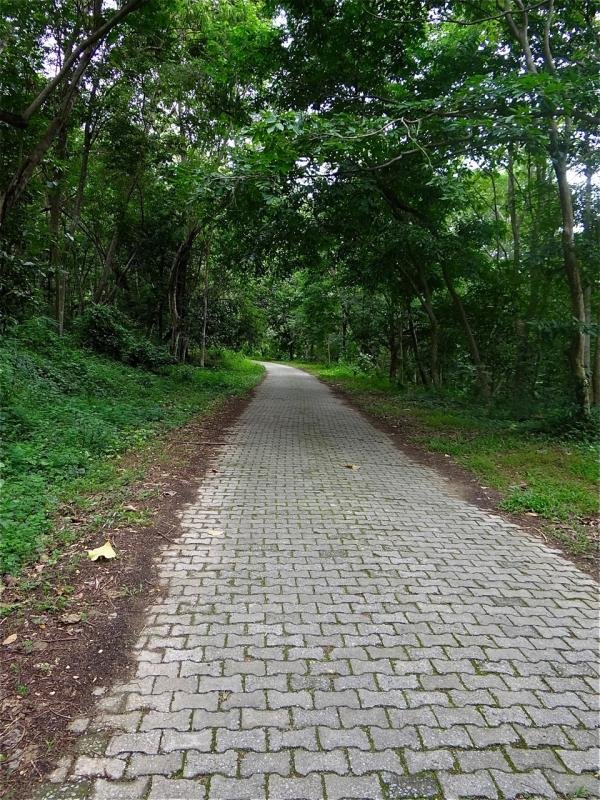
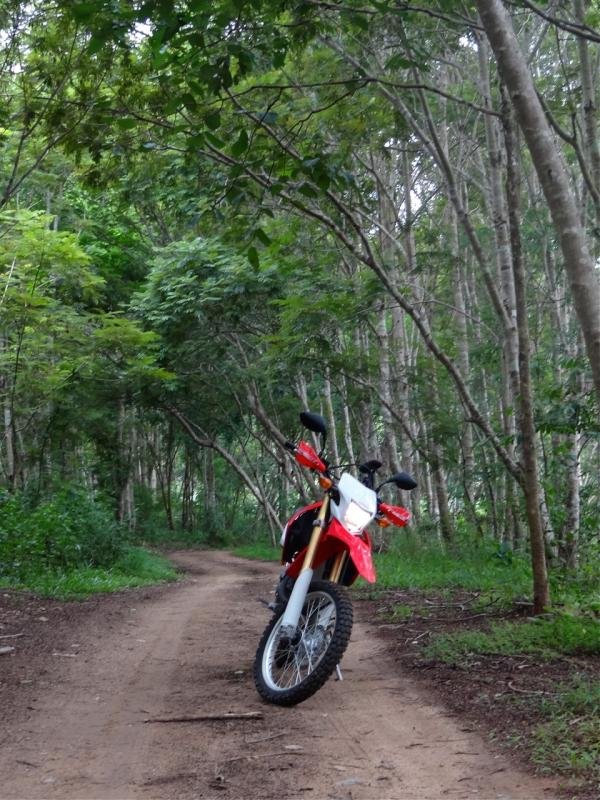
The Garmin led me into some tracks which looked ok on the map but were actually overgrown jungle tracks which were, today, muddy and slippery.
Not a problem on the CRF, but it taught me that it is possible to ride deeper and deeper into trouble.
So I managed a 4 point U-turn and retreated back towards the 5127.
Along the way I stopped at a store where 3 expats were drinking,
One told me a story that, back in the reservoir, they are catching huge fish but they are flavourless.
Apparently the water is only about a metre deep.
Opposite this drinking spot is this magnificent home, owned by a Chonburi family who come here for their retreat from the hustle and bustle.
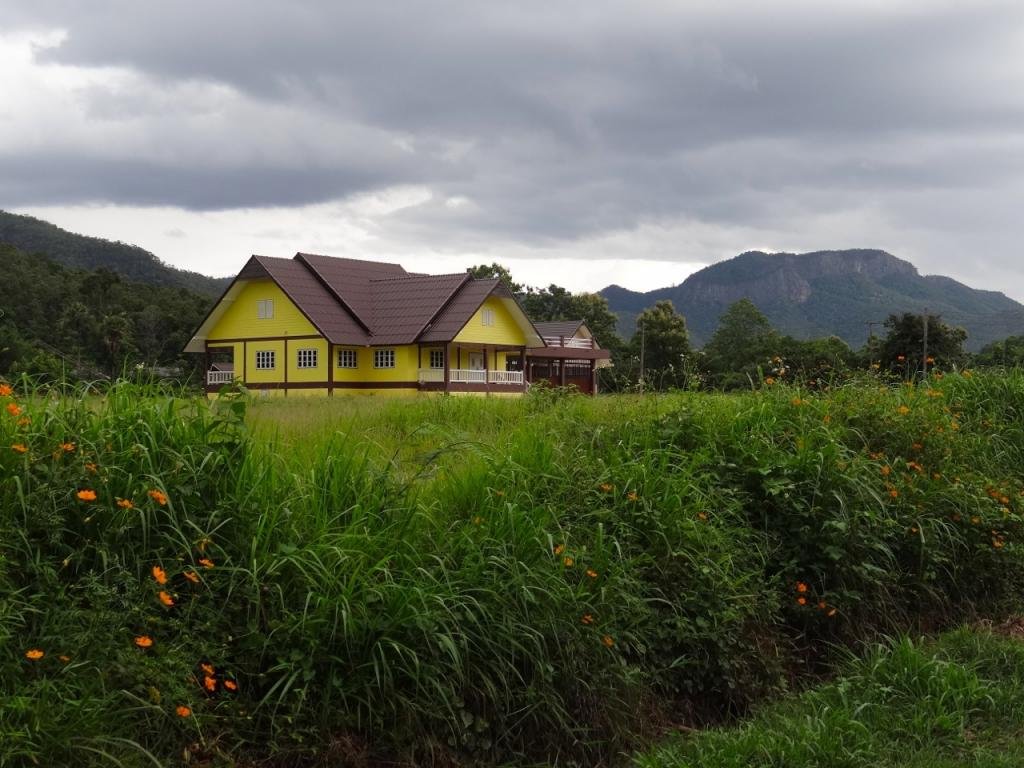
Then some local dirt tracks back to the 5127, which ends at another reservoir.
Wet.
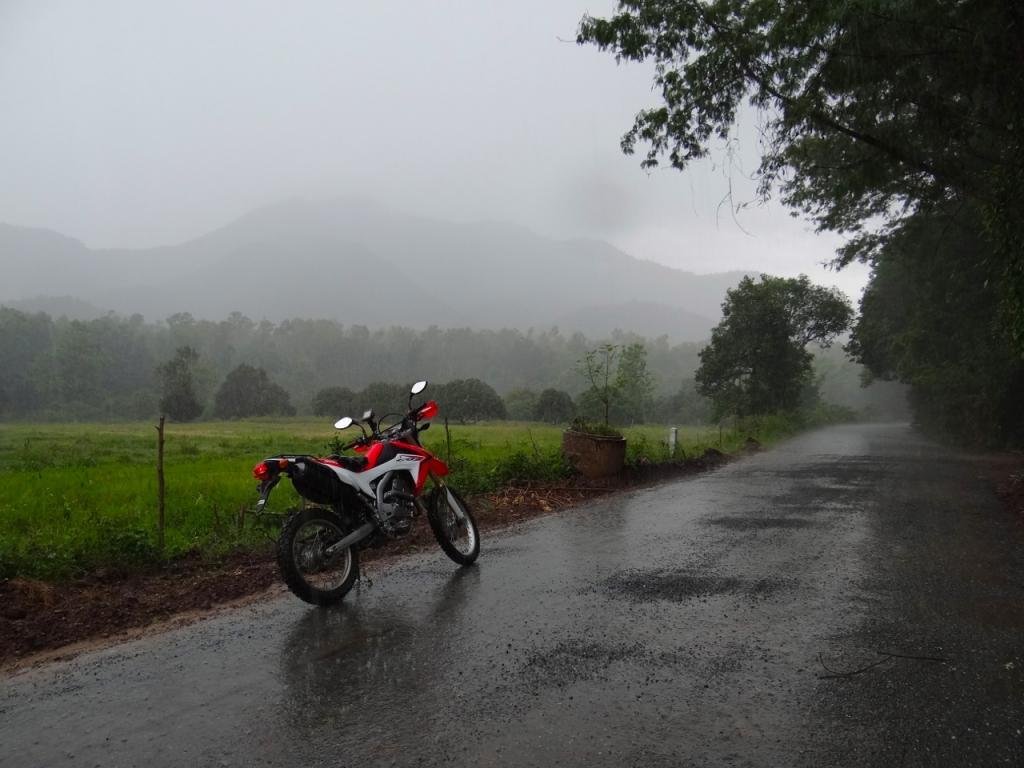
Onto the 5123 and the delightful 1006, where I stopped at what I thought was a Coffee Shop under construction. Wrong; it is a Sala located near the road-side and the actual residence is about 100 metres behind still under construction.
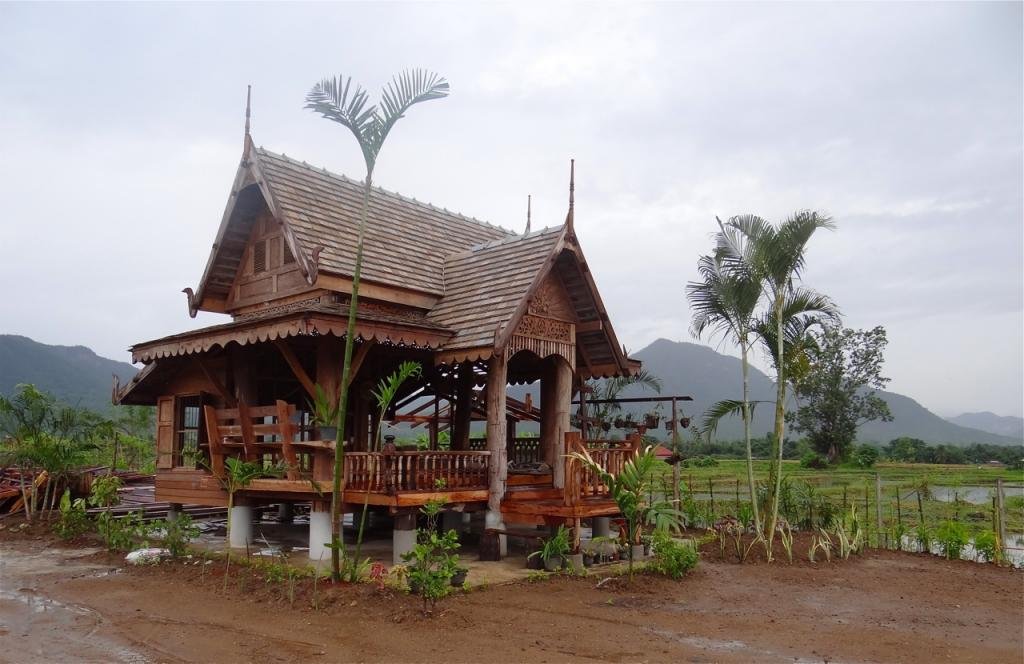
OK, time to test the 'get me home to a hot shower and a whiskey and soda' function.
Near the Mae On Cave this new monument caught my eye.
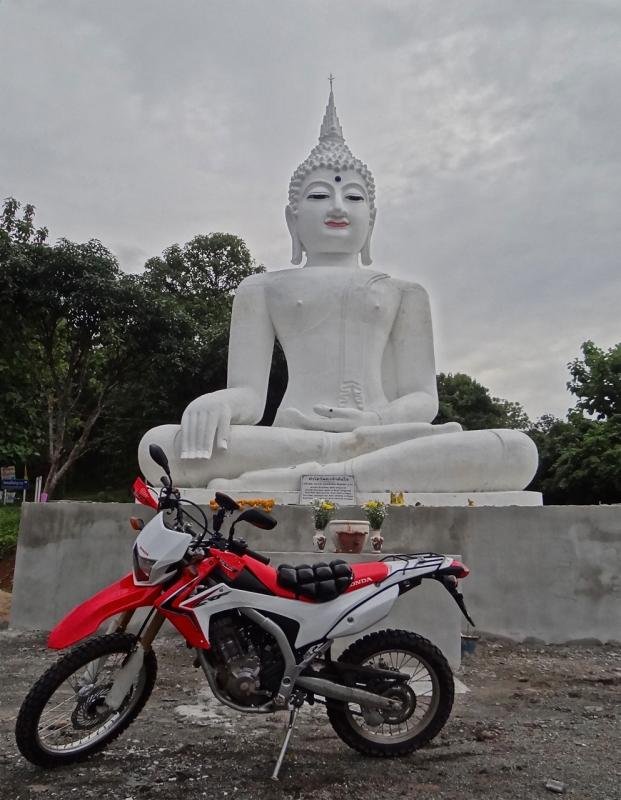
Fantastic!
'1.3 kms turn right, straight ahead 5.2 kms, left at intersection' ... so easy and reassuring.
Why would this be written in English?, I wonder.
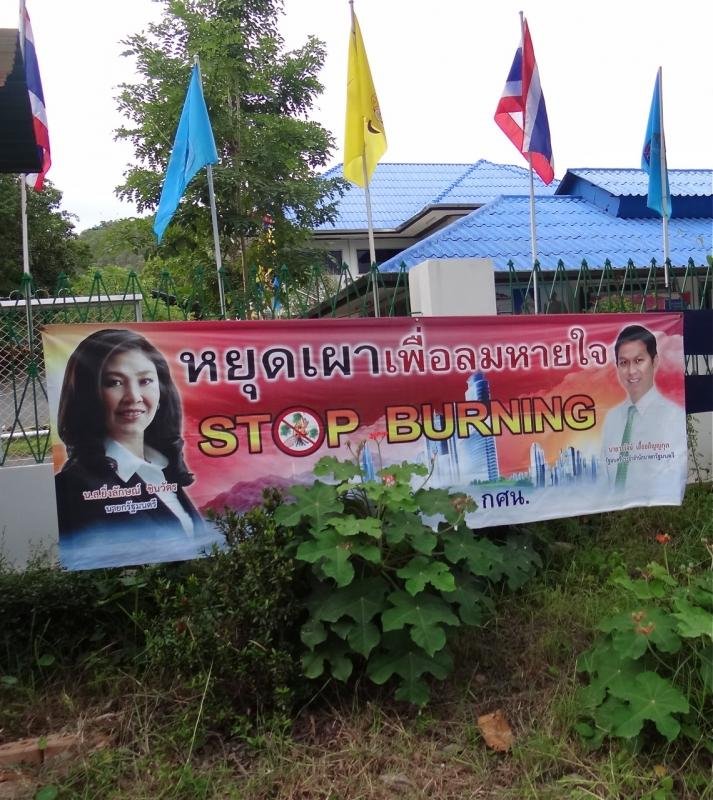
Then a lovely welcome back home.
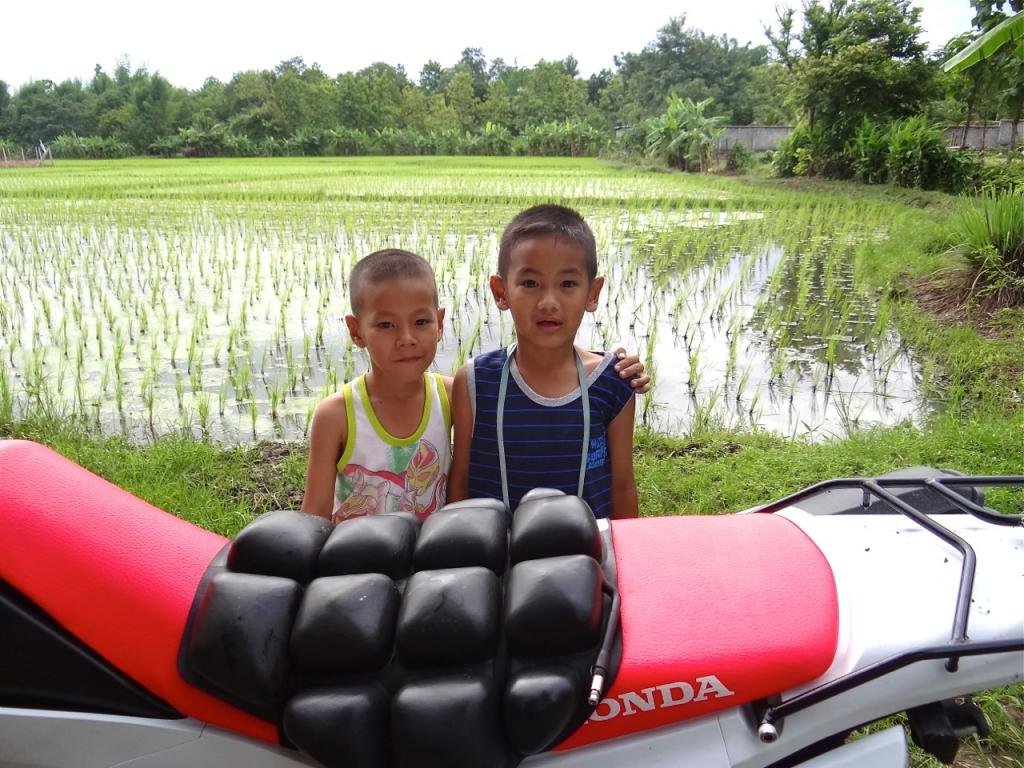
So that was another delightful afternoon during which I met some lovely people, saw some beautiful new scenery, got to enjoy my CRF even more and learnt some new tricks from the Montana 650. Still a lot to learn though.
Life is good.
Not far from home I spotted what just might qualify as an 'Almost Asian Bridge Photo'. (?)

I like village Temples and this one (Wat Nong Sae) was my next stop; and time to climb into the wet weather gear!


I would be riding in those mountains.
Actually, like some others here, I don't mind wet weather riding.
I've never been one for rapid riding, so it's not an issue to take it easy; as long as the wet weather clothing works. Tragically, I soon discovered mine doesn't !!!!


Next stop was at Wat Pah Daeng, which is new and has a very proud care-taker who is pleased to show visitors around.



Many of us have seen this practise before.
I confess to not knowing exactly why Buddhists do it.
It's easy to speculate, but I must find out what it's really all about.
(Or maybe some-one who actually knows can share the information here).

Again, out to #1147 where I spotted what might really qualify as an 'Asian Bridge Crossing Photo' !?

Off the 1147 and onto the 5127 for a while.
The impressive Alpine Resort (minus the snow).

Back to 5127 and on to 5120 where I enjoyed riding all sorts of tracks around the Huai Lan Reservoir.


Here there are brick roads, dirt tracks and deep muddy jungle tracks to explore.
Another place to return to on a dry day.


The Garmin led me into some tracks which looked ok on the map but were actually overgrown jungle tracks which were, today, muddy and slippery.
Not a problem on the CRF, but it taught me that it is possible to ride deeper and deeper into trouble.
So I managed a 4 point U-turn and retreated back towards the 5127.
Along the way I stopped at a store where 3 expats were drinking,
One told me a story that, back in the reservoir, they are catching huge fish but they are flavourless.
Apparently the water is only about a metre deep.
Opposite this drinking spot is this magnificent home, owned by a Chonburi family who come here for their retreat from the hustle and bustle.

Then some local dirt tracks back to the 5127, which ends at another reservoir.
Wet.

Onto the 5123 and the delightful 1006, where I stopped at what I thought was a Coffee Shop under construction. Wrong; it is a Sala located near the road-side and the actual residence is about 100 metres behind still under construction.

OK, time to test the 'get me home to a hot shower and a whiskey and soda' function.
Near the Mae On Cave this new monument caught my eye.

Fantastic!
'1.3 kms turn right, straight ahead 5.2 kms, left at intersection' ... so easy and reassuring.
Why would this be written in English?, I wonder.

Then a lovely welcome back home.

So that was another delightful afternoon during which I met some lovely people, saw some beautiful new scenery, got to enjoy my CRF even more and learnt some new tricks from the Montana 650. Still a lot to learn though.
Life is good.




